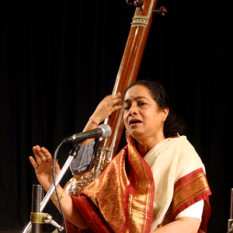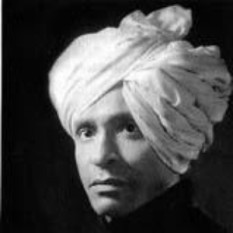Khayal (or Khyal, Hindi: ख़्याल, Urdu: خیال) is the modern genre of classical singing in North India. Its name comes from an Arabic word meaning "imagination". It appeared more recently than dhrupad. Like all Indian classical music, khyal is modal, with a single melodic line and no harmonic parts. The modes are called raga, and each raga is a complicated framework of melodic rules.
Khyal bases itself on a repertoire of short songs (two to eight lines). Khyals are generally composed either in a variant of Urdu, Hindi or in Farsi, and these compositions cover diverse topics, such as romantic or divine love, praise of kings or gods, the seasons, dawn and dusk, and the pranks of Krishna. The khyal composition is divided into two parts — the sthayi (or asthayi) and the antara. The singer uses these as raw material for improvisation, accompanied by a set of two hand drums (the tabla), and usually a harmonium or bowed string instrument such as the sarangi, violin or dilruba playing off the singer's melody line, and with a drone in the background. A typical khyal performance uses two songs, one slow (vilambit) and one fast (drut). The slow song, the bada khyal or great khyal, comprises most of the performance; the fast song (chhota khyal, small khyal) is used as a finale and is usually in the same raga. The songs are sometimes preceded by improvised alap to sketch the basic raga structure without drum accompaniment; alap is given much less room in khyal than in other forms of classical music in north India. .


